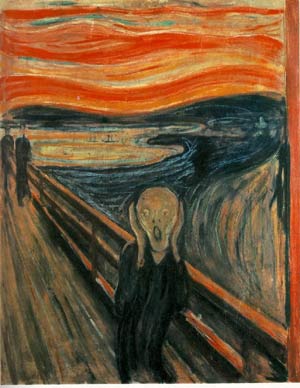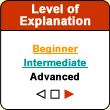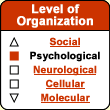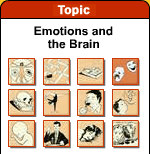|
|
|
|
 |
| Fear,
Anxiety and Anguish |
 |
|
|
|




A
neuroscientist gets drunk to explain alcohol’s effects on the
brain
| From the standpoint of evolutionary
survival, anxiety and even anxiety attacks may well have had
some benefits for the human species. Suppose, for example,
that one of our ancestors was walking through a part of the
forest where he had previously been attacked by a wild beast.
He may not have noticed it consciously, but a feeling of anxiety
or anguish triggered by his unconscious emotional
memory may have encouraged him not to linger in this area
again for too long. Similarly, the anxiety that we feel when
we cannot see things at night might encourage us to hide in
the back of a cave until dawn, rather than wander around the
forest where predators might sneak up on us. |
|
|
| WHEN FEAR TAKES
THE CONTROLS |
|
From a psychological perspective, fear,
anxiety, and anguish are three different things. But they are related
and may be regarded as three different degrees of the same state:
the one that people experience when their sympathetic
nervous system impels them to act, but
action is in fact impossible.
Fear is a strong, intense emotion
experienced in the presence of a real, immediate threat. It originates
in a system that detects dangers and produces responses that
will increase the individual’s chances of surviving them.
In other words, it triggers a sequence of defensive behaviours.
In humans, fear can also arise at the mere thought of a potential
danger. The
main neural pathways in which this defensive reaction originates are
well known, as are the
circuits at the centre of this natural alarm system: those
in the amygdala.
Anxiety is a vague, unpleasant
emotion that reflects some apprehension, distress, and diffuse
fears about no one thing in particular. Anxiety can be caused
by various situations. Some examples: having so much information
that you cannot process it all; not
having enough information, so that you feel helpless; having
trouble accepting certain events, such as the death of a loved
one; and experiencing other kinds of unpredictable or uncontrollable
events in your life.

The Scream by Edvard Munch
Anxiety can also result from a specifically
human and hence neocortical process: imagining situations that
do not exist but that you are afraid of. It is this anxiety of
cortical origin that can be relieved by medications such as benzodiazepines,
which potentiate the effect of GABA, the main inhibitory
neurotransmitter in the cortex.
While temporary anxiety is normal and has
no lasting effects, persistent anxiety often inhibits us from taking
action, and this inhibition can
quickly lead to pathological conditions. Chronic anxiety can
also disturb the performance of many cognitive functions such as
attentiveness, memory, and problem-solving.
Though the word “anguish” comes
from the same Indo-European root as “anxiety” (angh,
meaning to tighten or compress), the two conditions differ in that anguish is
always accompanied by physiological changes such as sweating, a
racing pulse, and a feeling of suffocating, while anxiety is not.
Anguish is characterized by the intensity
of the psychic discomfort experienced, which results from extreme
uneasiness, a sense of being defenceless and powerless to deal
with a danger that seems vague but imminent. Anguish often occurs
in the form of attacks that are very hard to control. Victims have
trouble analyzing the source of their anguish, and feeling the
onset of the associated palpitations, sweating, and trembling only
makes them more agitated. People who are experiencing anguish become
focused on the present and can no longer perform more than one
task at a time. They show signs of muscle tension and have difficulty
breathing, as well as digesting their food.
| Fear is a common, natural
emotion. But when it gets out of control, it can lead to many
different mental disorders. For example, generalized anxiety is
a chronic fear with no particular trigger. Phobias are
fears of specific things (such as spiders, crowds, or closed
spaces), taken to the extreme. Obsessive-compulsive disorder often
involves an excessive fear of something, such as germs, that
drives individuals to engage in repetitive rituals to ensure
that they do not come into contact with the thing they fear. Panic
attacks involve the sudden triggering of physical symptoms
of distress, often accompanied by the fear of imminent death. Post-traumatic
stress often occurs when a situation or stimulus reminds
someone of a traumatic experience that they underwent long
ago but that suddenly seems immediately present once again. |
| The stage fright we feel when we have
to address an audience and the stress we feel when we are about
to be put to a test where a lot is at stake are also forms
of anguish, both of which generally dissipate as soon as the
waiting is over and we begin the task at hand. Anguish can
have a positive side, if it lets us mobilize our energies to
give the best of ourselves at key moments. But once again,
it becomes harmful if it paralyzes us and keeps us from taking
action. |
|
|





